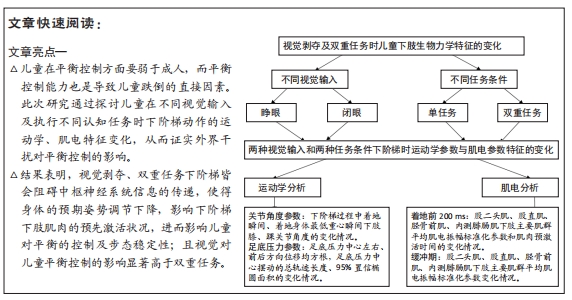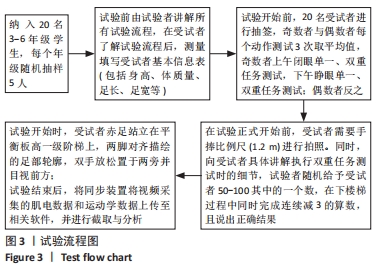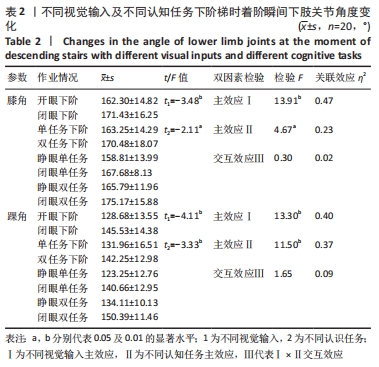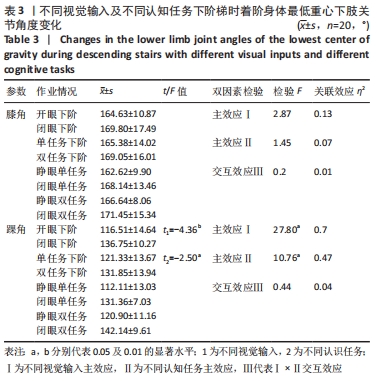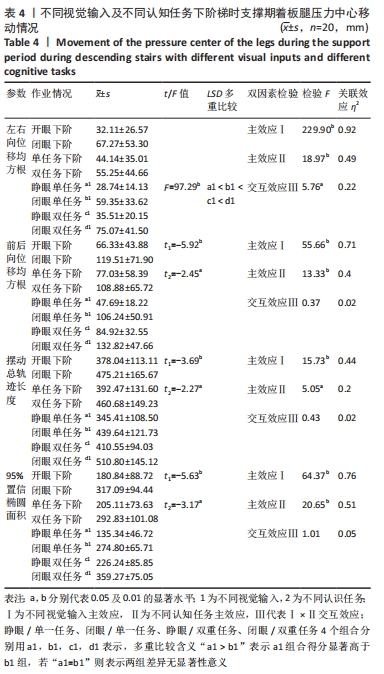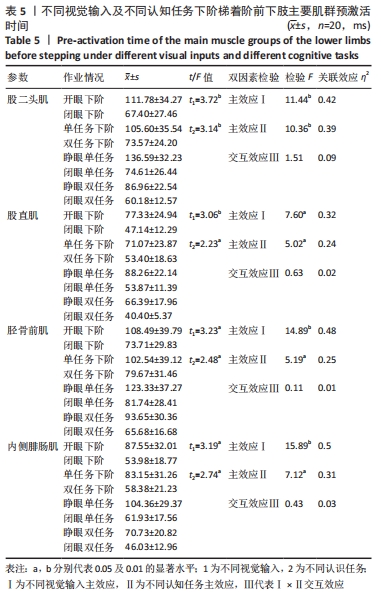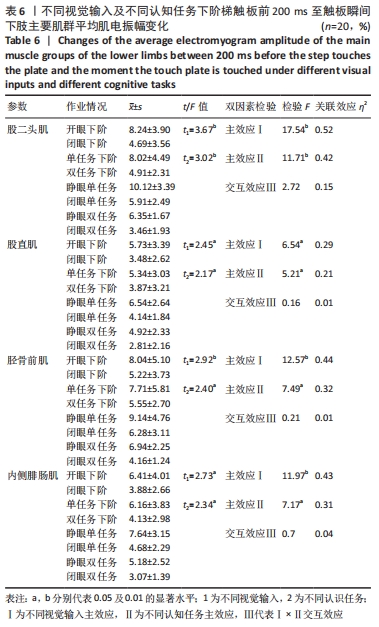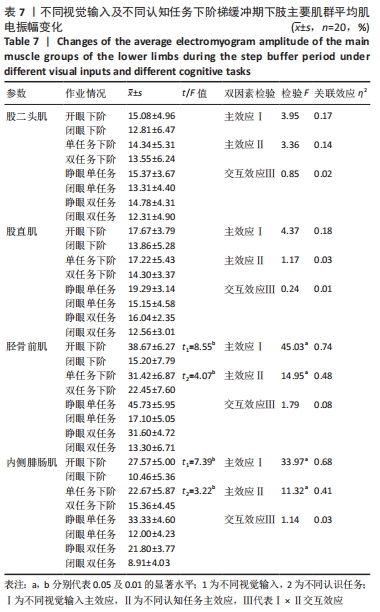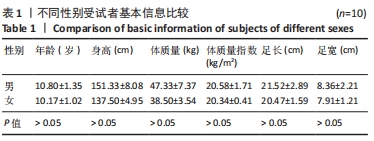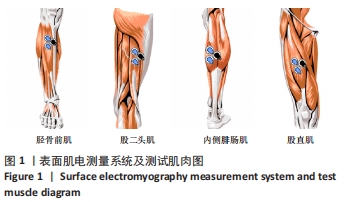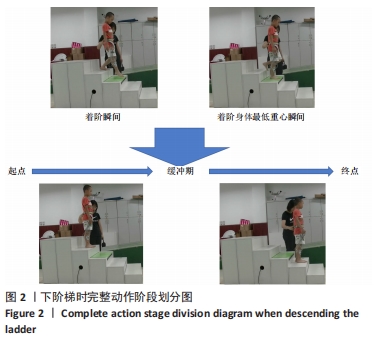[1] 闫蓓,黄丽妹,彭娟娟,等.上海市儿童跌倒伤害干预项目效果评价[J].中华疾病控制杂志,2017,21(8):775-779.
[2] 王卓,王德征,张颖,等.天津市2014年0-14岁儿童院内报告伤害流行特征分析[J].中华疾病控制杂志,2018,22(8):813-816+821.
[3] KARPINSKY M , KIZILOVA N. Computerized posturography for data analysis and mathematical modelling of postural sway during different two-legged and one-legged human stance. J Vibroeng. 2007;9(3):118-124.
[4] OLDHAM JR, MASTER CL, WALKER GA, et al. Impaired eye tracking is associated with symptom severity but not dynamic postural control in adolescents following concussion. J Sport Health Sci. 2021;10(2):138-144+253.
[5] KABBALIGERE R, LEE BC, LAYNE CS. Balancing sensory inputs: sensory reweighting of ankle proprioception and vision during a bipedal posture task. Gait Posture. 2017;52:244-250.
[6] BRODOEHL S, KLINGNER C, STIEGLITZ K, et al. The impact of eye closure on somatosensory perception in the elderly. Behav Brain Res. 2015;293:89-95.
[7] BRODOEHL S, KLINGNER CM, WITTE OW. Eye closure enhances dark night perceptions. Sci Rep. 2015;5:1-10.
[8] Lesinski M, Hortobágyi T, Muehlbauer T, et al. Dose-Response Relationships of Balance Training in Healthy Young Adults: A Systematic Review and Meta-Analysis. Sports Med. 2015;45:557.
[9] D’HONDT E , DEFORCHE B , BOURDEAUDHUIJ ID , et al. Postural balance under normal and altered sensory conditions in normal-weight and overweight children. Clin Biomech (Bristol, Avon). 2011;26(1):84-89.
[10] YOUNG WR, WILLIAMS AM. How fear of falling can increase fall-risk in older adults: Applying psychological theory to practical observations. Gait Posture. 2015;41(1):7-12.
[11] HUXHAM FE , GOLDIE PA , PATLA AE. Theoretical considerations in balance assessment. Aust J Physiother. 2001;47(2):89-100.
[12] 金成敏,曲峰,赵享楠,等.双任务下楼梯行走时对下肢肌肉活动表现及加速度近似熵指数的影响[J].天津体育学院学报,2018,33(4):362-368.
[13] 段林茹,郑洁皎,徐国会,等.感觉的平衡维持优先策略研究[J].中国康复理论与实践,2017,23(11):1241-1244.
[14] 杨婷,钱兴皋,张会慧,等.平衡反馈训练仪与Berg平衡量表在评定脑卒中偏瘫患者平衡功能中的相关性[J]. 中国康复医学杂志,2012,27(11): 1011-1014.
[15] 蔡庆,谢丽君,赵绿玉,等.基于反重力跑台训练系统的双重运动任务训练对脑卒中患者平衡功能的效果[J].中国康复理论与实践,2018, 24(11):1315-1319.
[16] 董若,倪少波,林清洋,等.双重任务起立步行测试评估脑卒中患者肢体功能的相关性分析[J].中华老年心脑血管病杂志,2019,21(2):168-171.
[17] DINGENEN B , JANSSENS L , LUYCKX T , et al. Lower extremity muscle activation onset times during the transition from double-leg stance to single-leg stance in anterior cruciate ligament injured subjects. Br J Sports Med. 2015;44(7):234-245.
[18] DINGENEN B , JANSSENS L , LUYCKX T , et al. Postural stability during the transition from double-leg stance to single-leg stance in anterior cruciate ligament injured subjects. Clin Biomech. 2015;30(3): 283-289
[19] BOURLON C, LEHENAFF L, BATIFOULIER C, et al. Dual-tasking postural control in patients with right brain damage . Gait Posture. 2014;39(1):188-193.
[20] 朱婷,郑洁皎,丁建伟,等.注意力分配对双重任务模型平衡和计算能力的影响[J].中国康复理论与实践,2019,25(4):439-443.
[21] 林建志,陈重佑.着阶反弹跳的肌肉控制特征[J].体育学报,2017,50(2): 207-218.
[22] 张燊,傅维杰,刘宇.不同着阶冲击模式的下肢生物力学研究[J].体育科学,2016,36(1):59-66.
[23] 傅维杰,刘宇,黄灵燕,等.不同着阶方式下鞋缓冲特性对下肢肌肉活化及共激活的影响[J].中国运动医学杂志,2014,33(9):860-868.
[24] KWON EH, BLOCK ME. Implementing the adapted physical education E-learning program into physical education teacher education program. Res Dev Dis. 2017;69:18-29.
[25] 彭远秋.视觉剥夺状态阶梯动作下肢肌肉组织刚度调节及肌电变化[J].中国组织工程研究,2019,23(15):2338-2344.
[26] HORAK FB. Postural orientation and equilibrium: what do we need to know about neurol control of balance to prevent falls? Age Ageing. 2006;35(2):7-11.
[27] 孙威.太极拳运动对老年女性双任务模式楼梯行走姿势控制能力的影响[D].上海:上海体育学院,2019.
[28] 孟凡童.太极拳运动对老年人在双重任务下楼梯时预防跌倒的效果研究[D].济南:山东体育学院,2017.
[29] HAN KS , SHIN SH , YU CH , et al. Postural responses during the various frequencies of anteroposterior perturbation. Biomed Mater Eng. 2014; 24(6):2537-2545.
[30] HWANG S, TAE K, SOHN R, et al. The Balance Recovery Mechanisms Against Unexpected Forward Perturbation. Ann Biomed Eng. 2009;37(8):1629-1637.
[31] SCHUT IM , PASMA JH , MESTDAGH J , et al. Effect of Amplitude and Number of Repetitions of the Perturbation on System Identification of Human Balance Control During Stance. IEEE Trans Neural Syst Rehabil Eng . 2019;27(12):2336-2343.
[32] REMAUD A, BOYAS S, CARON GA, et al. Attentional Demands Associated With Postural Control Depend on Task Difficulty and Visual Condition. J Motor Behav. 2012;44(5):329-340.
[33] DETTMER M, POURMOGHADDAM A, LEE BC, et al. Associations between Tactile Sensory Threshold and Postural Performance and Effects of Healthy Aging and Subthreshold Vibrotactile Stimulation on Postural Outcomes in a Simple Dual Task. Curr Gerontol Geriatr Res. 2016;2016:9797369.
[34] 李宗涛.预测老年女性跌倒风险的静立平衡COP活动参数研究[J].山东体育学院学报,2013,29(1):66-69.
[35] CARPENTER MG, MURNAGHAN CD, INGLIS JT. Shifting the balance: evidence of an exploratory role for postural sway. Neuroscience. 2010;171(1):196-204.
[36] SINGH NB , TAYLOR WR , MADIGAN ML , et al. The spectral content of postural sway during quiet stance: Influences of age, vision and somatosensory inputs. J Electromyogr Kinesiol. 2012;22(1):131-136.
[37] JEON SN , CHOI JH. The effects of ankle joint strategy exercises with and without visual feedback on the dynamic balance of stroke patients. J Phys Ther Sci. 2015;27(8):2515-2518.
[38] LI K, BHERER L, MIRELMAN A, et al. Cognitive involvement in balance, gait and dual-tasking in aging: a focused review from a neuroscience of aging perspective. Front Neurol. 2018;9:913.
[39] FUJITA H, KASUBUCHI K, WAKATA S, et al. Role of the frontal cortex in standing postural sway tasks while dual-tasking: afunctional near-infrared spectroscopy study examining working memory capacity. Biomed Res Int. 2016;2016:7053867.
[40] 陈秀恩,郑洁皎,施海涛,等.认知注意力、平衡功能双重任务训练对预防老年人跌倒的临床研究[J].中国康复,2016,31(3):215-217.
[41] 裴子文,朱元霄,李贝,等.外在注意力焦点策略在脑卒中患者康复中的研究进展[J].中国康复理论与实践,2020,26(3):315-318.
[42] 朱琪,羊健中,乔蕾,等.视觉代偿对系统性红斑狼疮患者平衡功能的影响[J].中国康复,2010,25(6):439-440.
[43] NYLAND J, MAUSER N, CABORN DN. Sports involvement following ACL reconstruction is related to lower extremity neuromuscular adaptations, subjective knee function and health locus of control. Knee Surg Sports Traumatol Arthrosc. 2013;21(9):2019-2028.
[44] RODRIGUEZ KM, PALMIERI-SMITH RM, KRISHNAN C. How does anterior cruciate ligament reconstruction affect the functioning of the brain and spinal cord?A systematic review with meta-analysis. J Sport Health Sci. 2021;10(02):172-181.
[45] 张帆,王竹影,吴志建,等.踝关节稳定程度差异对侧跳落地缓冲模式影响的研究[J].中国体育科技,2020,56(2):46-63.
[46] KIPP K, PFEIFFER R, SABICK M, et al. Muscle Synergies During a Single-Leg Drop-Landing in Boys and Girls. J Appl Biomech. 2014;30(2):262-268.
[47] SANTOS MJ, KANEKAR N, ARUIN AS. The role of anticipatory postural adjustments in compensatory control of posture: 1. Electromyographic analysis. J Electromyogr Kinesiol. 2010;20(3):388-397.
[48] 温子星, 徐欣, 潘景文,等. 预测性姿势调节对人体站立受扰后姿势响应影响的研究[J]. 中国康复医学杂志,2016,31(10):1104-1110.
[49] 黄韵静,洪彰岑,黄文杰,等.视障生下阶梯动作肌肉劲度调节能力与肌电现象之研究[J].体育学报2006,39(4):47-61.
[50] 张芷,王健.神经肌肉下意识前馈与反馈控制的知觉线索效应[J].心理学报,2014,46(1):50-57.
[51] CHMIELEWSKI TL, TATMAN J, SUZUKI S, et al. Impaired motor control after sport-related concussion could increase risk for musculoskeletal injury: implications for clinical management and rehabilitation. J Sport Health Sci. 2021;10(2):154-161+253.
[52] YIOU E, CADERBY T, DELAFONTAINE A, et al. Balance control during gait initiation: State-of-the-art and research perspectives. World J Orthop. 2017;8(11):815-828.
[53] UEMURA K, YAMADA M, NAGAI K, et al. Fear of falling is prolonged anticipatory postural adjustment during gait initiation associated withunder dual-task conditions in older adults. Gait Posture. 2012;35(2):282-286.
[54] PLATE A, KLEIN K, PELYKH O, et al. Anticipatory postural adjustments are unaffected by age and are not absent in patients with the freezing of gait phenomenon. Exp Brain Res. 2016;234(9):1-10.
[55] 陈意,谢运娟,高强.预期性姿势调节的神经调控网络研究进展[J].中国康复理论与实践,2020,26(5):568-571.
[56] 冯祺,任杰.平衡与动作控制中的预期性姿势调节[J]. 中国运动医学杂志,2017,36(11):1017-1025.
[57] PANOUTSAKOPOULOS V, PAPACHATZIS N, KOLLIAS IA. Sport specificity background affects the principal component structure of vertical squat jump performance of young adult female athletes. Sport Health Sci. 2014; 3(3):239-247.
[58] 张帆,王长生,祝捷,等. 上、下楼梯时认知任务介入对下肢协调性影响的研究[J]. 体育科学,2015,35(1):44-53.
[59] BENCKE J, ZEBIS MK. The influence of gender on neuromuscular pre-activity during side-cutting. J Electromyogr Kinesiol. 2011;21(2):371-375.
[60] KLYNE DM, KEAYS SL, BULLOCK-SAXTON JE, et al. The effect of anterior cruciate ligament rupture on the timing and amplitude of gastrocnemius muscle activation: A study of alterations in EMG measures and their relationship to knee joint stability. J Electromyogr Kinesiol. 2012;22(3):446-455.
[61] 孙晨光,王纯.两种平衡测试中功能性踝关节不稳患者的肌肉活化特征[J].中国组织工程研究,2019,23(15):2320-2326.
|
